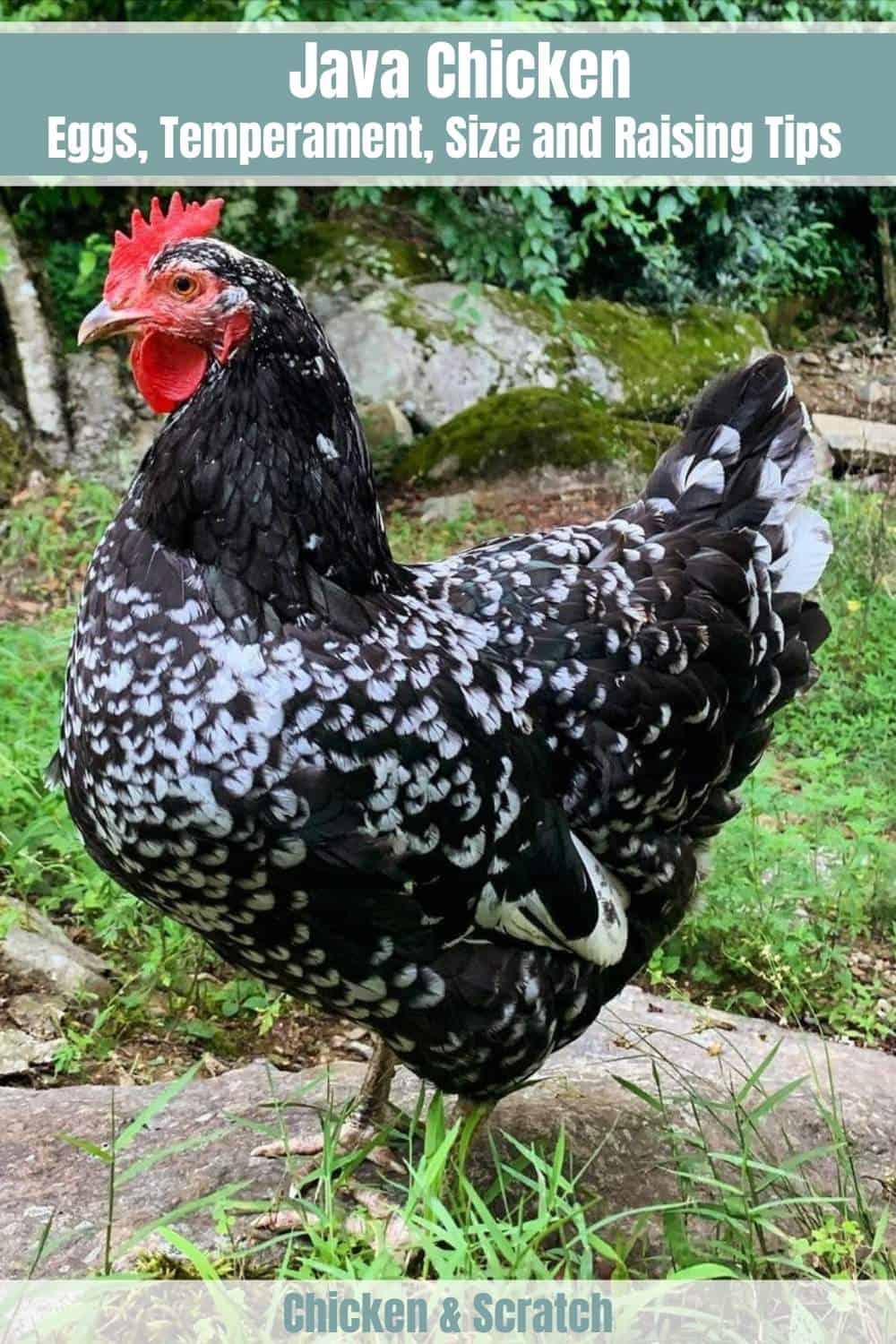There are many breeds of chicken out there, which might confuse you when choosing the right one. To go for the right breed, you have to consider many factors. For example, the climate of your location is essential.
If you live in a cold region, you shouldn’t go for a breed that can only survive in a hot region. Also, consider the purposes for breeding chickens. If eggs are important to you, then you need chickens that are prolific at laying eggs.
If you’re breeding chickens for their flesh, then you should choose the fleshy ones. If you’re looking for a good breed of chicken, you can check out Java chicken, the second-oldest breed of chicken in America.
This article will cover
- Java Chicken Background and History
- Breed Standard and Appearance
- Java Chickens Personality and Temperament
- Egg Laying of Java Chicken
- Health Issues And Care
- 4 Tips for Raising Java Chicken
Java Chicken Background and History
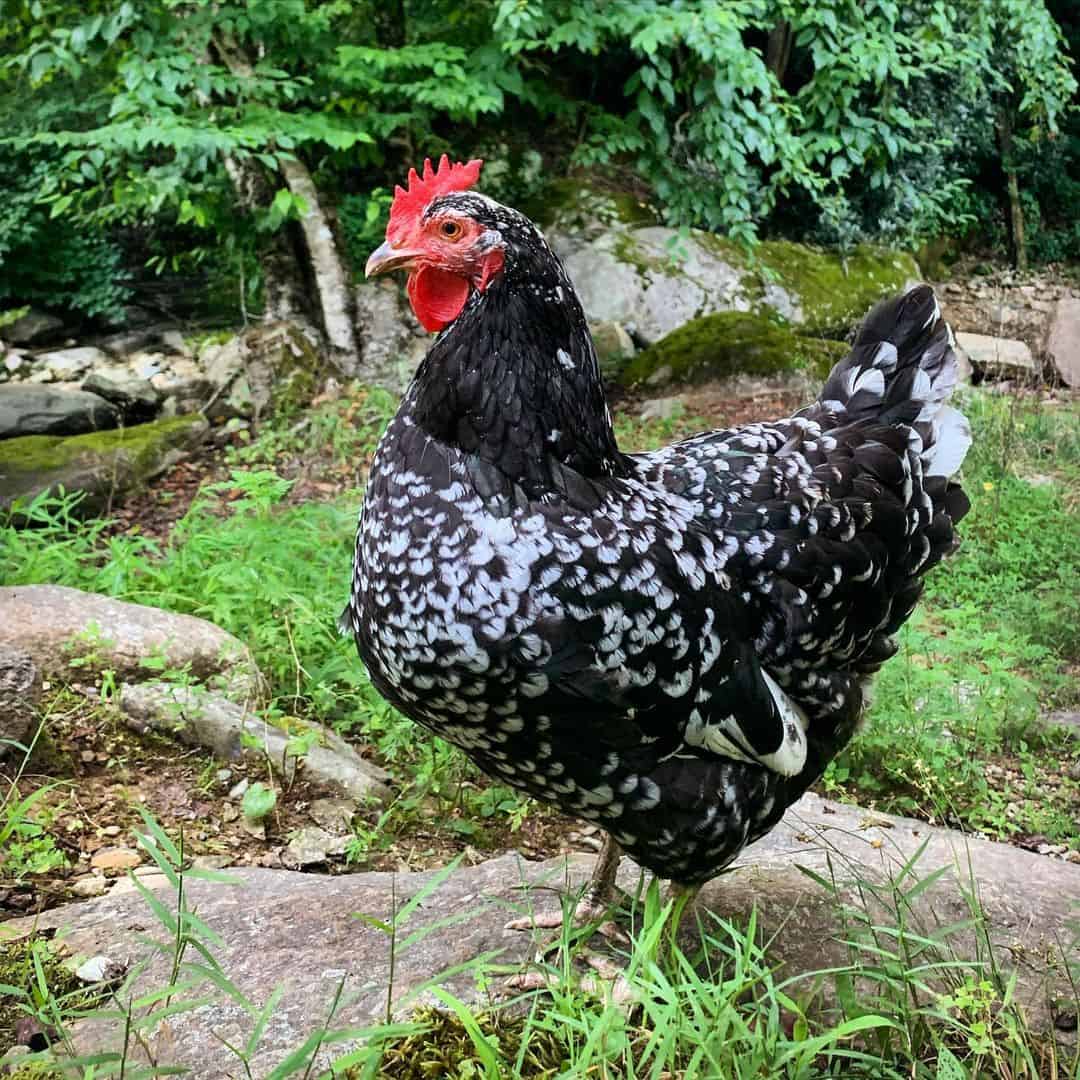
Java chicken is considered the second-oldest breed of chicken, with the Dominique Chicken being the first, in the United States of America. It is a breed that was created from other unknown chicken breeds from Asia.
It is generally believed that these unknown chicken breeds were from the isle of Java and appeared in America during the 1830s. However, the Java breed was developed in America and was popular in places like New Jersey. They were also used for creating other breeds such as Plymouth Rock, Jersey Giant, etc.
The Java chicken breed was officially recognized in 1883 by the American Poultry Association in their Standard of Perfection publication. They are great for homesteading and love it when they are allowed to free-range, but they grow slowly compared to other chicken breeds. There are four varieties: Auburn, White, Mottled and Black.
The American Poultry Association Standard of Perfection only recognizes the Mottled and Black Java chickens. It admitted the White variety but removed it because the White Javas were similar to the White Plymouth Rock.
Eventually, the White variety went extinct in the 1950s. The Auburn Javas were never recognized by the Association, even though both the White and Auburn Javas are still bred by some breeders.
Java chickens are dual-purpose chickens. That is, they are reared for both meat and egg production. Their eggs are usually large and healthy, and they make an excellent carcass when eaten as meat. With proper care and barring any fatal health issues, Java chickens can have a lifespan ranging from 5 to 8 years.
They are also considered one of the best heritage breeds for living outside a farm. However, they became rarer when the new breeds they were used to create, such as Plymouth Rock, Rhode Island Red, etc., became more popular.
Breed Standard and Appearance
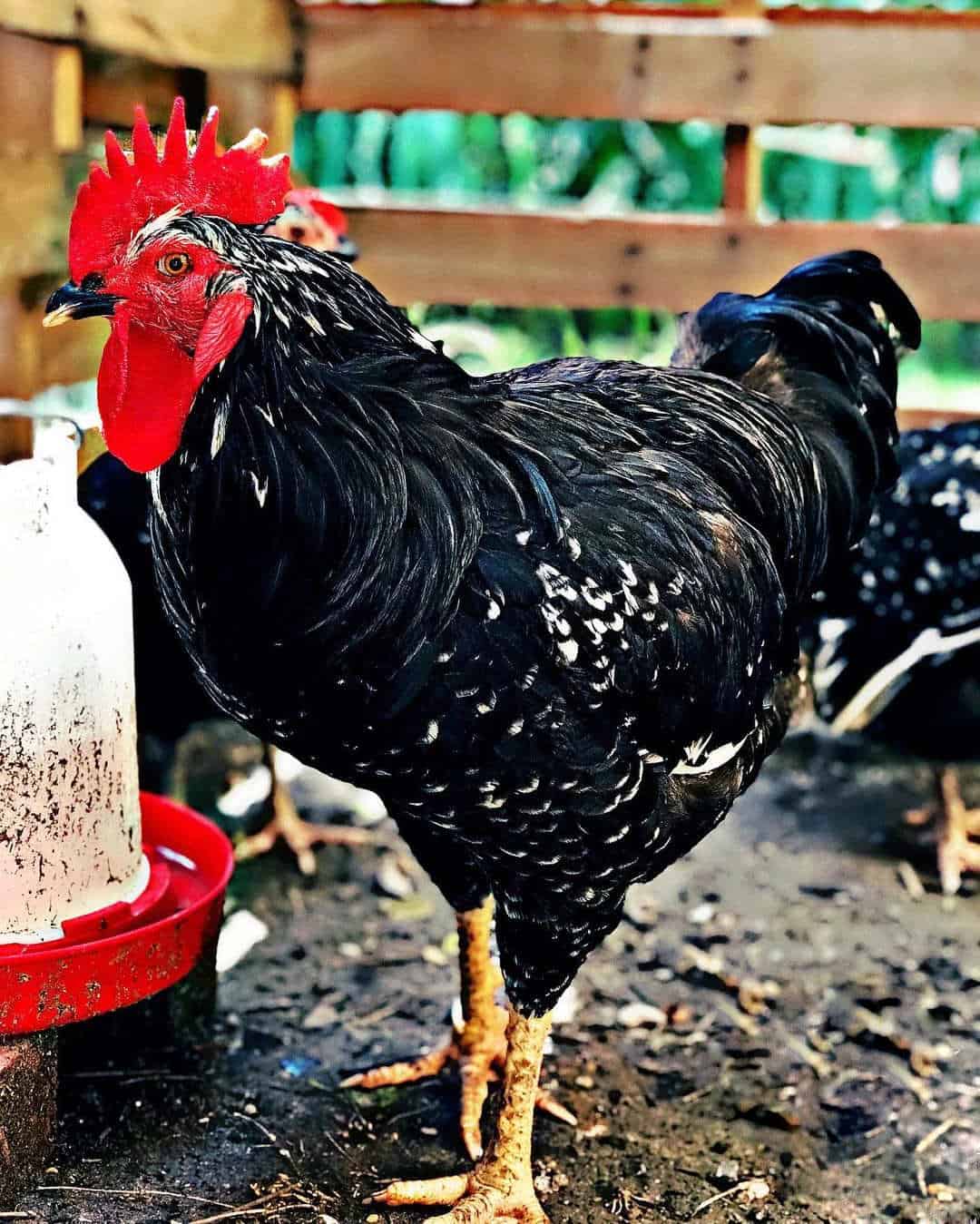
The Java chicken has four varieties: Black, Mottled, Auburn, and White. Black Javas have dark brown or black eyes and black beaks. Their legs are black, and their feet bottoms are yellow. Even though their feathers are black, you’ll find a beetle-green sheen on them.
Mottled Javas have horn beaks and reddish eyes, with yellow feet bottoms and mottles of white on their black feathers. Their legs are blue, and the feathers get whiter as a Mottled Java grows. The White Java has light-willow legs with yellow feet, bottoms, and horn beaks.
The eyes are reddish as well. However, it isn’t easy to find the White Java. The Auburn Java was created from the Black Java and is mainly used for making other breeds, such as Rhode Island.
Furthermore, Java chickens are large-sized, with the rooster weighing up to 4.3 kg and the hens up to 2.9 – 3.4 kg. Their bodies are broad and rectangular, with sloping backs. They have tight feathers and full breasts. They have single, small to medium-sized combs each.
One way to recognize a Java chicken is that the comb’s first point is above the chicken’s eye, unlike the nostrils like other chickens. With small, red earlobes and small-sized wattles, Java chicken is one of the most beautiful chicken breeds in America.
All varieties of Java chicken lay brown eggs and are suitable for meat. They are perfect for breeding as dual-purpose chickens. Their toes are neither webbed nor crested.
Naturally, Java chickens are strong and healthy. Their heads are mostly up, not tucked into their bodies. If your chickens are tired and still with their heads hunched up, it means they aren’t healthy.
Besides, their combs should be bright red for roosters and laying hens, while pink for non-laying hens. If the combs are of another color, that indicates that blood doesn’t circulate as it should.
Java Chickens Personality and Temperament

Java chickens aren’t aggressive at all. They are docile and calm. They enjoy human company and love to be paid attention to. They are great for people who have kids and socialize well with other chicken breeds. They aren’t noisy, but the roosters love crowing. Even though they do well when confined, they love to free-range too. They are active and alert and make good mothers.
If introducing new chicken breeds to a flock of Java chickens, it’s crucial to quarantine the newcomers first to prevent the spread of diseases. Allow both chickens to mingle before you put them all in the same coop.
You can create a temporary home for the new chicken breeds in the meantime. When the new chickens feel at home, they’ll follow the Java chickens into the permanent coop. However, ensure you watch over them to avoid thongs getting out of control.
Since Java chickens enjoy the attention, you must be friendly with them. Visit their coop frequently; you don’t have to stay for long. You can put them on your lap and pet them or allow your kids to play with them under supervision.
It’s best you start raising them from chicks too. When it’s time for feeding them or giving them treats, ensure you get their attention. Even though Java chickens like to free-range, don’t allow them to fend for themselves. You can use food to train them in maintaining a good temperament.
However, just like any other breed of chicken, don’t mess with the chicks a Java hen is raising. Hens are very protective of their chicks, making them less pleasant whenever they are nurturing. As such, you should respect the hen’s wishes to be left alone with her chicks. It can be not easy getting the chicks’ attention, but with time, they’ll come around.
Egg Laying of Java Chicken

The eggs of Java chickens are large and brown. Java chickens typically start laying eggs around the age of 6 months, producing approximately 3 to 4 eggs per week. In a year, you’ll get about 150 to 180 eggs from a single Java hen.
If there’s enough calcium in their diet, you’ll notice that their eggs will be hard-shelled. Java chickens are dual-purpose chickens, but if you’re particular about their egg production, you have to ensure that their diet is nutrition-dense. Laying birds eat several times per day, so food should always be available.
Besides, ensure you pay attention to the hens. They lay more eggs when they’re active, alert, and entertained. Don’t allow them to be bored. Make the coop big enough for each to scratch around; you can also give them something to peck at.
The coop should be well-ventilated, too, as hens don’t feel comfortable in hot situations. Inadequate ventilation can also aid the spread of bacteria in the coop, which can destroy all your chickens.
More so, to aid egg production, you must rear the Java chicken in a spacious place. Laying birds need to feel secure wherever they are. If they don’t, the chances of egg-laying are few and far between.
Health Issues And Care
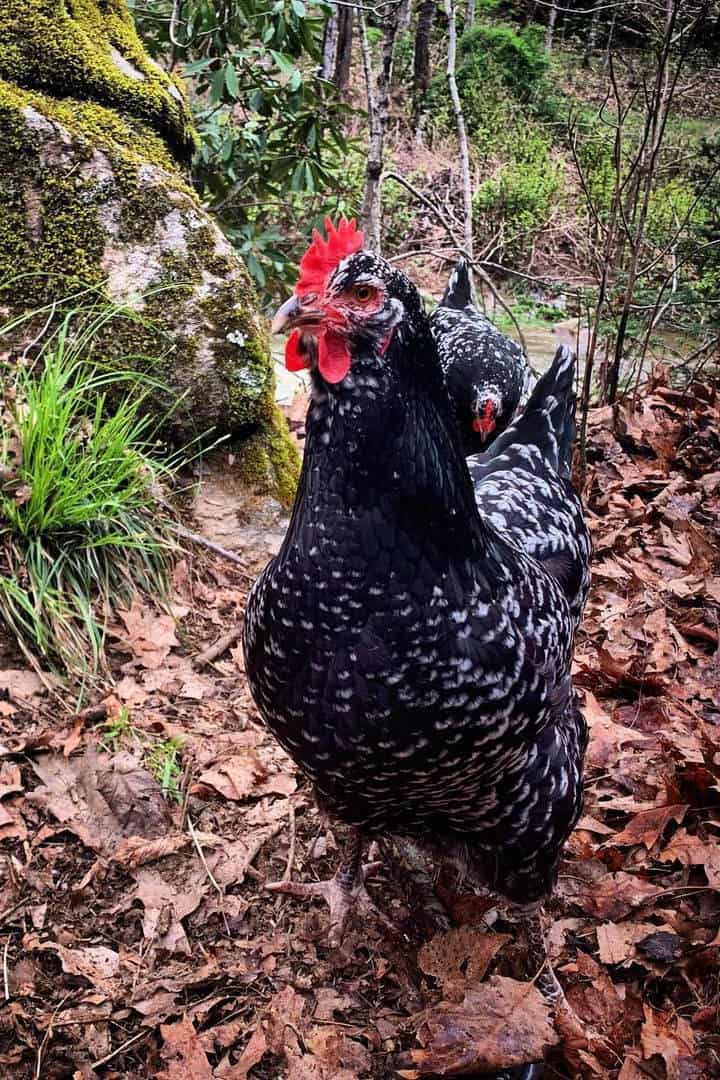
Java chickens naturally have robust immune systems due to the excellence of their breed. As long as you ensure they are kept in the right conditions, they won’t give you any trouble. However, they can fall ill just like any other chicken.
The quality of their health depends on how well you manage them. For instance, before you consider raising them as backyard chickens, you should have what it takes. There are local regulations that guide the number of chickens you can grow in your backyard.
Besides, you have to be mentally, financially, and physically ready to raise chickens. If you don’t have enough money or time to spend on them, it’ll affect their health as chickens are very sensitive animals.
Parasites
Another common health issue is parasites. Parasites, either internal or external, should be eliminated as soon as observed because they are dangerous. Lice, worms, mites, etc., are parasites that can infiltrate your coop if it’s soiled almost every time.
If your chickens start to lose their feathers or their skin gets irritated, that could be sign of parasitic diseases. You can treat this by adding safe but powerful plant products to their feed or water. Also, it’s best if you keep their pens elevated so that their contact with the ground will be minimized.
As regards external parasites, ticks, mites, and lice can cause premature death in your chicken if not treated immediately. Provide dust baths in the coop for your chickens to wallow in since they aren’t allowed to forage.
Don’t allow wild birds to come into the coop either. They can bring in some of these parasites. Ensure any treatment you give the chickens is approved by a professional to avoid worsening their situation. Also, spray the coop regularly with high-pressure chemicals, focusing on the cracks. Take the chickens out before you do this.
4 Tips for Raising Java Chicken

While Java chickens are naturally healthy birds, they need adequate care for successful breeding. You have to be passionate about this if you want to achieve the purposes of breeding them. Below are some tips to help you.
Protection
You have to protect your chickens from predators and the climate. Ensure the coop isn’t structured in a way that allows easy access to snakes, hawks, bobcats, dogs, etc. These predators can harm your chickens and steal their eggs.
Also, protect your chickens from the weather. They have to be warm and dry always, no matter the weather condition. For instance, you can light up the coop during the winter to keep them warm.
Feeding
Give your chickens the correct feed always. Allowing them to free-range isn’t the best option; they’ll likely not get all the nutritional requirements they need that way. Besides, free-ranging isn’t suitable for every backyard.
You should give them regular feed and supplement with treats. However, you have to give the laying birds laying feed to maximize their egg production. If you’re raising Java chicks, feed them with a good chick grower for about 14 weeks before giving them the laying feed.

Vaccination
To keep your chickens healthy, you need to vaccinate them regularly. Chickens have sensitive respiratory systems, making them easily susceptible to infections. Don’t wait for them to break down before you treat them. Vaccination helps to protect them from parasitic diseases and other infections. However, remember that vaccinations are only effective if the coop is clean.
Adding other chicken breeds
You can rear Java chickens with other chicken breeds, but you have to be careful when doing that. Java chickens are naturally friendly, but the temperament of the breed you are adding to the flock matters too. Only keep both breeds in a permanent space when it’s sure that they can live together peacefully. Always keep an eye on the flock too.
Summary
Java chickens are great as backyard chickens. They are naturally healthy and don’t require much effort to maintain. They have good temperaments too, so you’ll enjoy their company. However, you have to ensure you buy the right ones.
For instance, pure Java chickens usually have a single red comb whose first point is just above their eyes, not their nostrils. All varieties of Java chickens have yellow legs. As such, any Java chicken, either White, Black, Mottled, or Auburn, that doesn’t have yellow legs isn’t a pure breed.
Knowing how to distinguish a pure Java breed from other chicken breeds will prevent you from buying the wrong one. Asides from identifying pure breed, buy only from tried and trusted sellers.
Even if you don’t know how to identify a pure Java breed, a trusted seller can do that for you. You can go directly to farms where they grow different chicken breeds to reduce your chances of buying the wrong chicken breed.
Java chickens are regarded as critically endangered breeds by the American Livestock Breeds Conservancy because of their rarity. Beyond laying eggs and serving as meat, you can help preserve this breed of chicken by rearing them in your backyard.
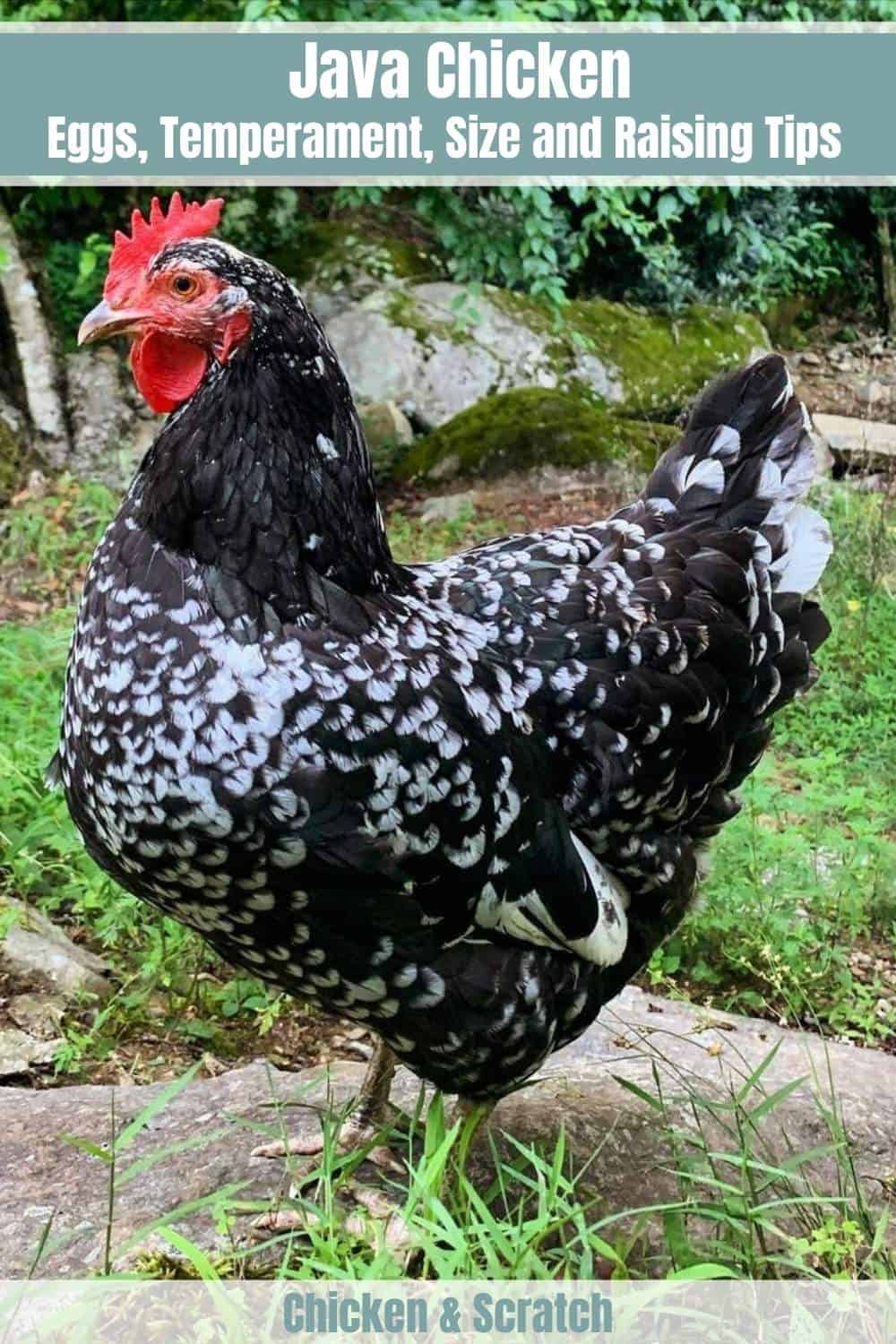

Joseph Hudson has been raising chickens for over 15 years. In 2018, he completed the Agriculture & Natural Resources program at Mt. San Antonio College. He currently raises over 1400 chickens on his 7.5-hectare farm. He keeps sharing his experience on raising healthy and happy chickens on Chicken Scratch The Foundry.
